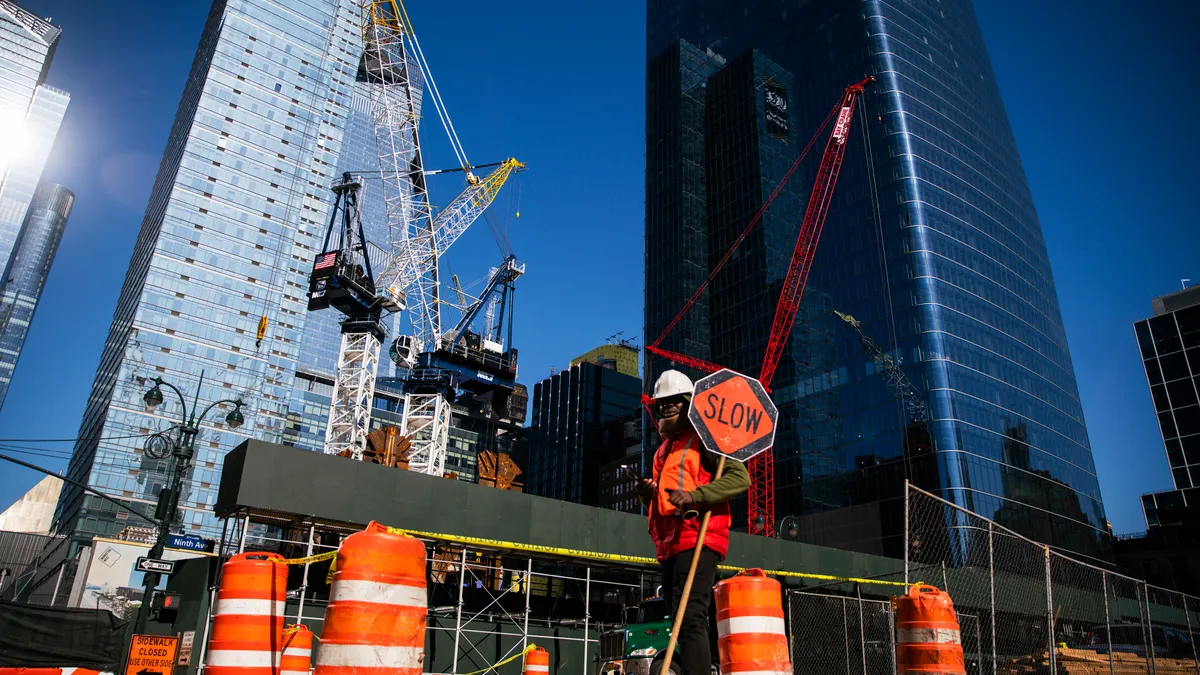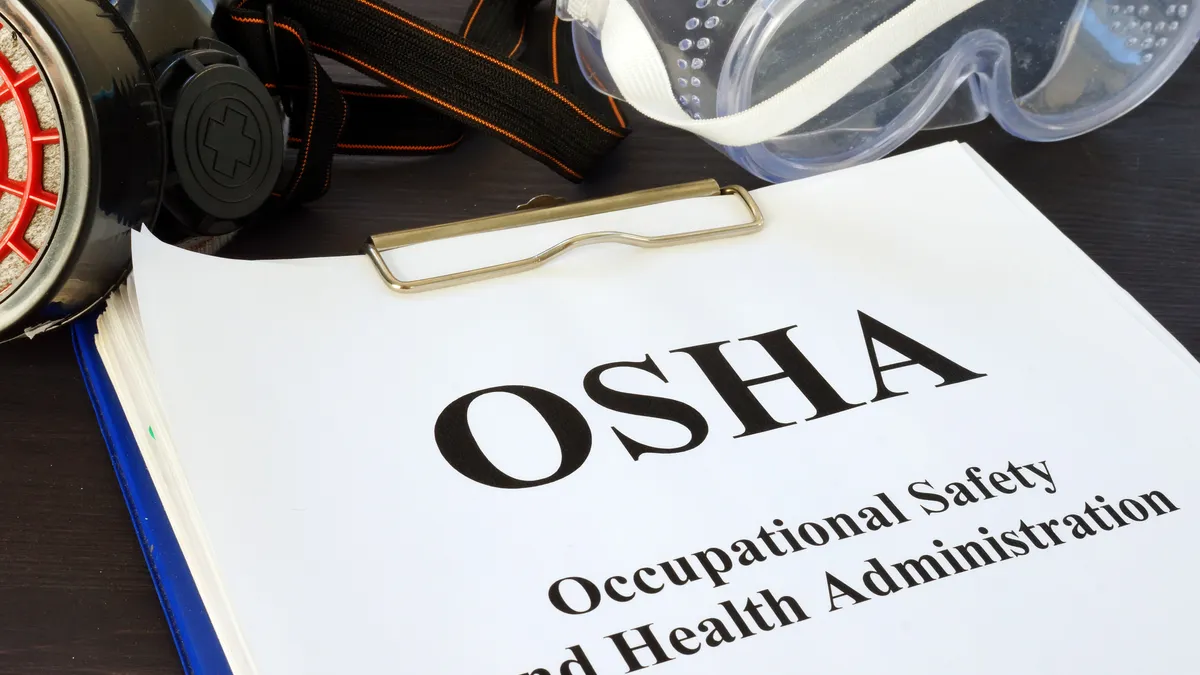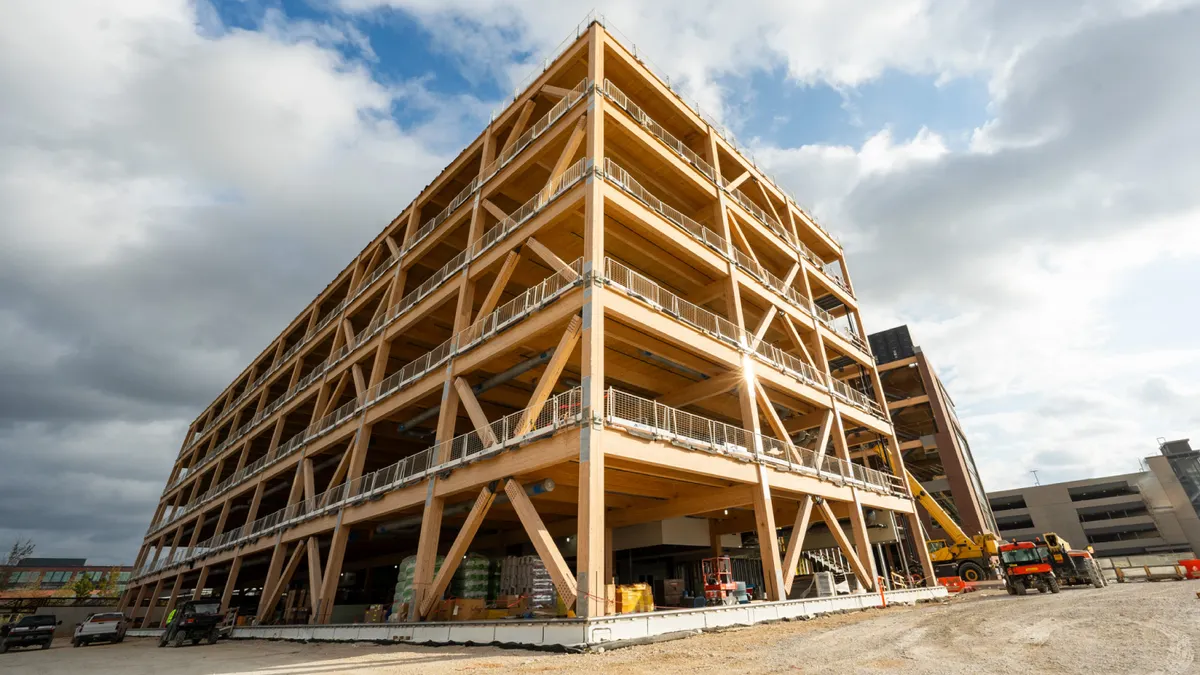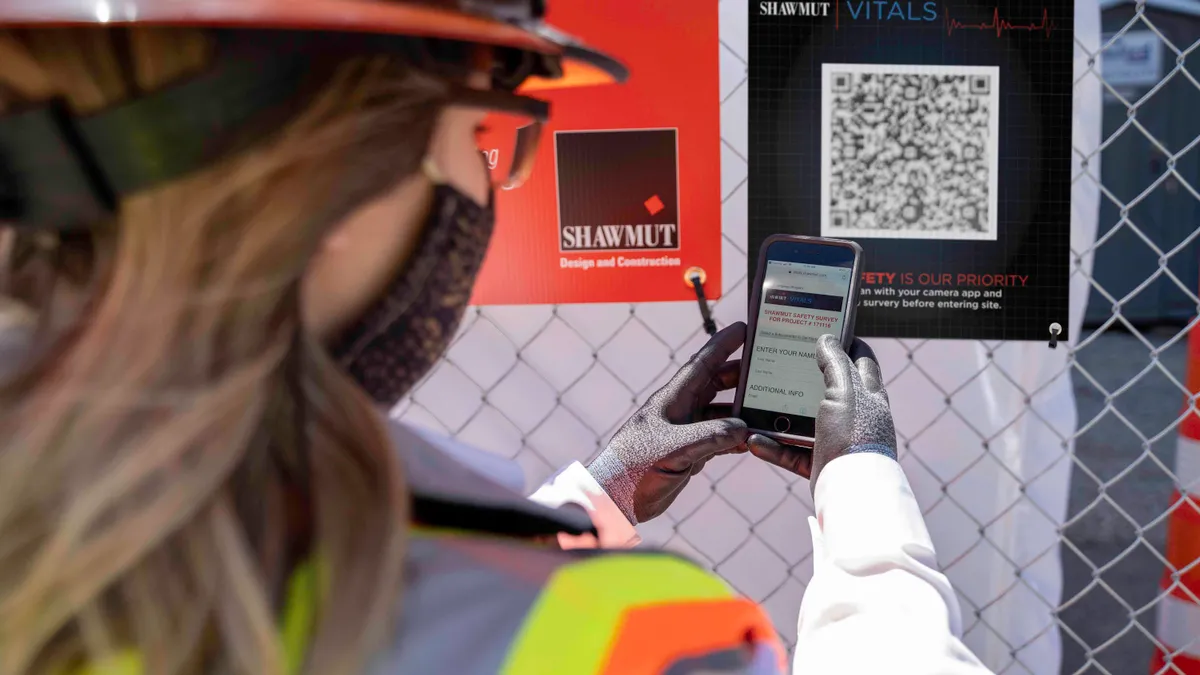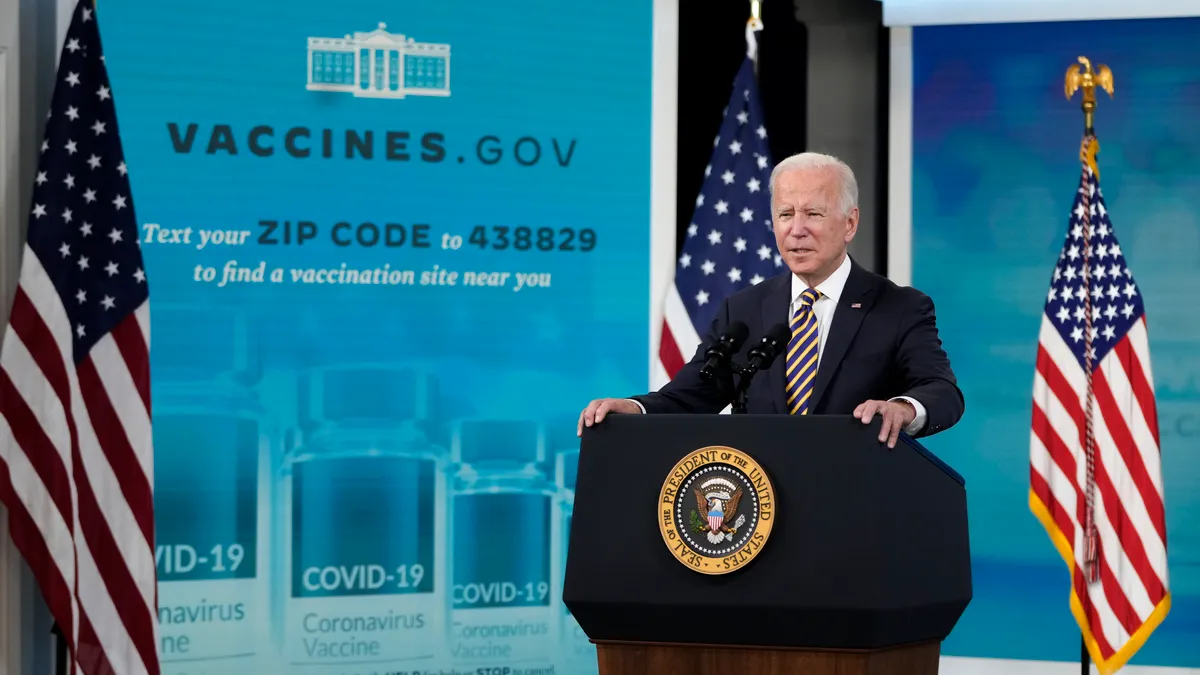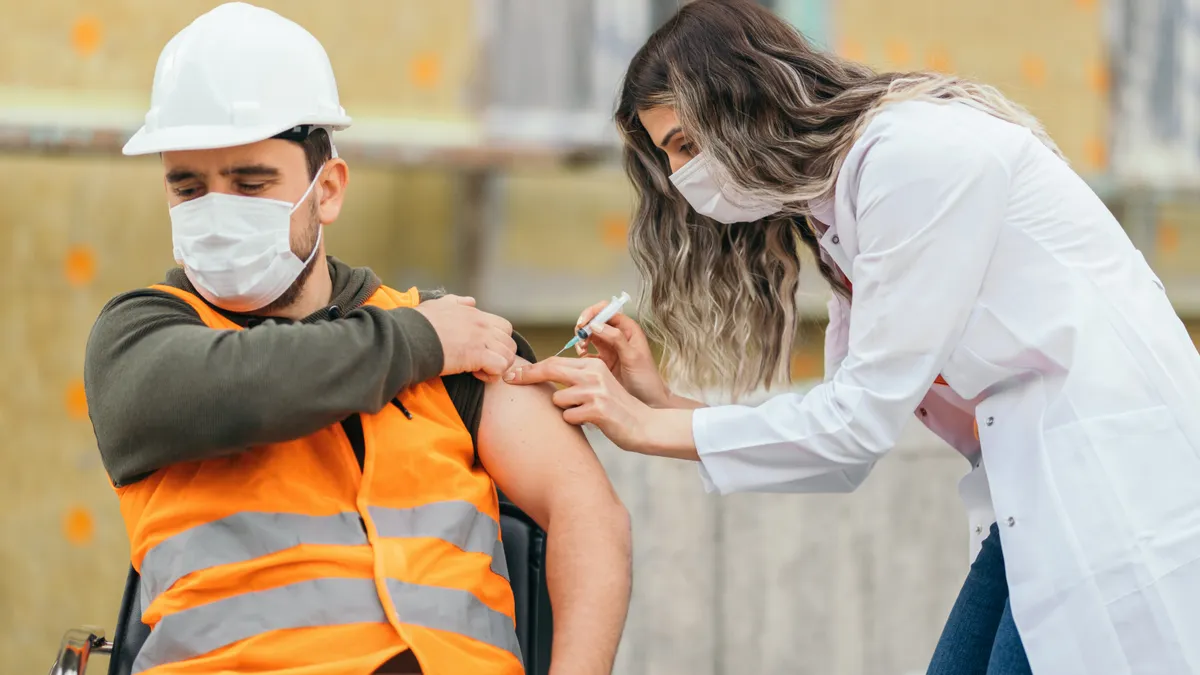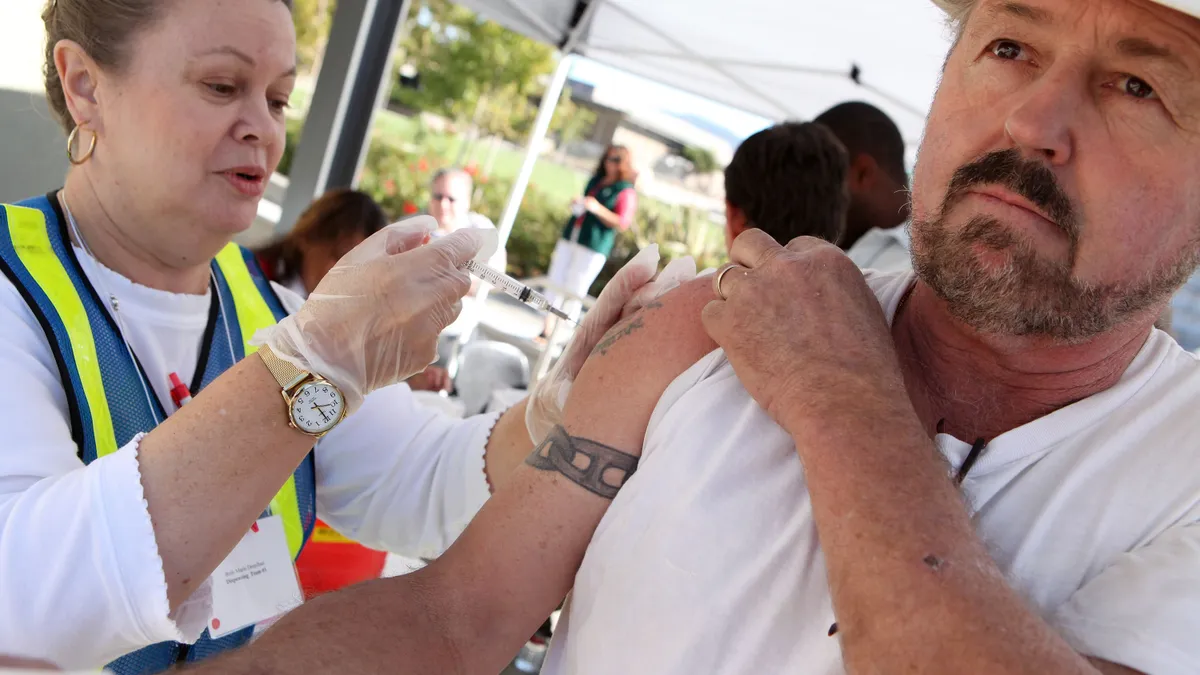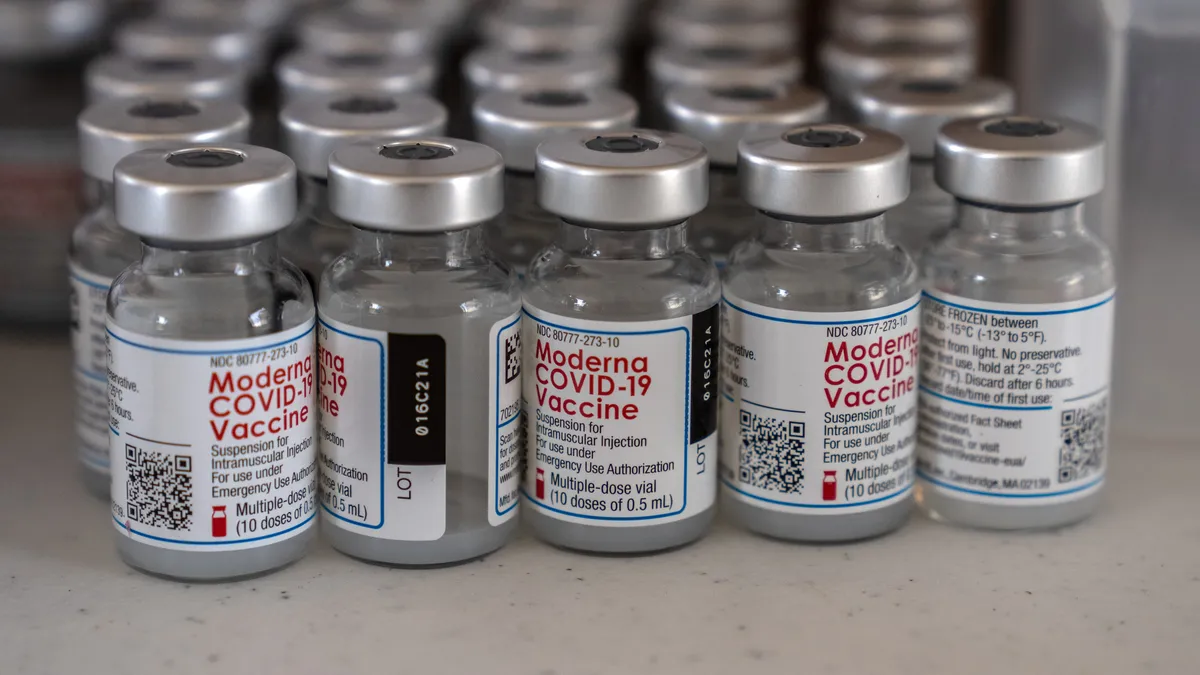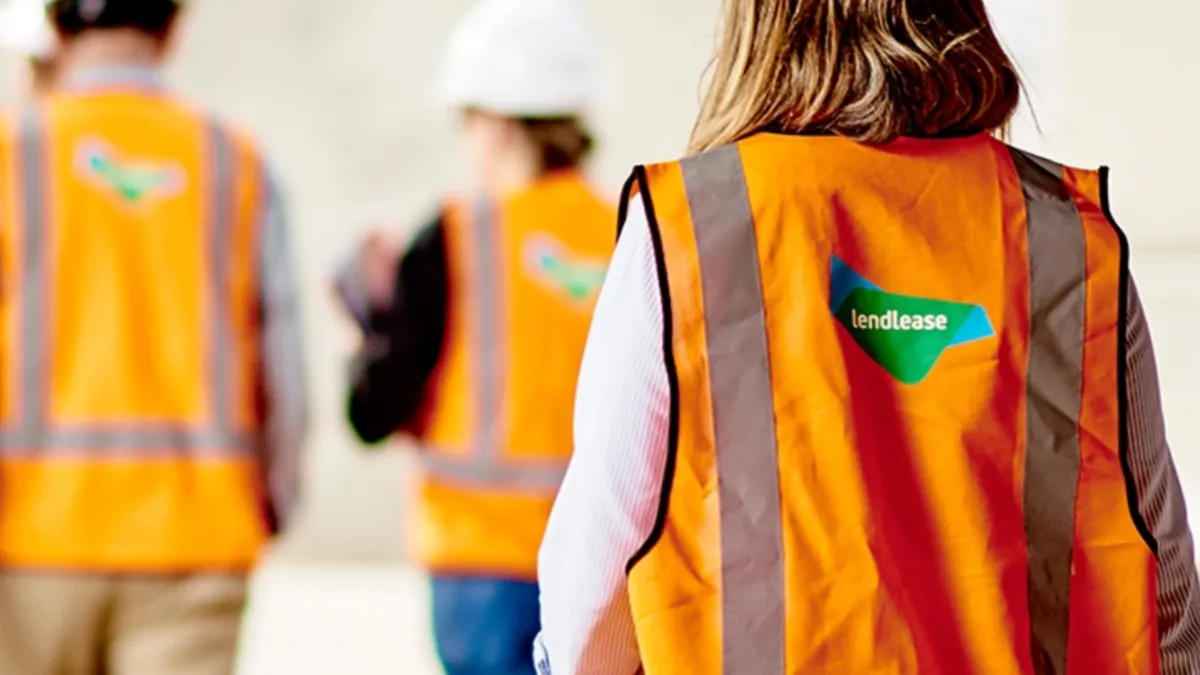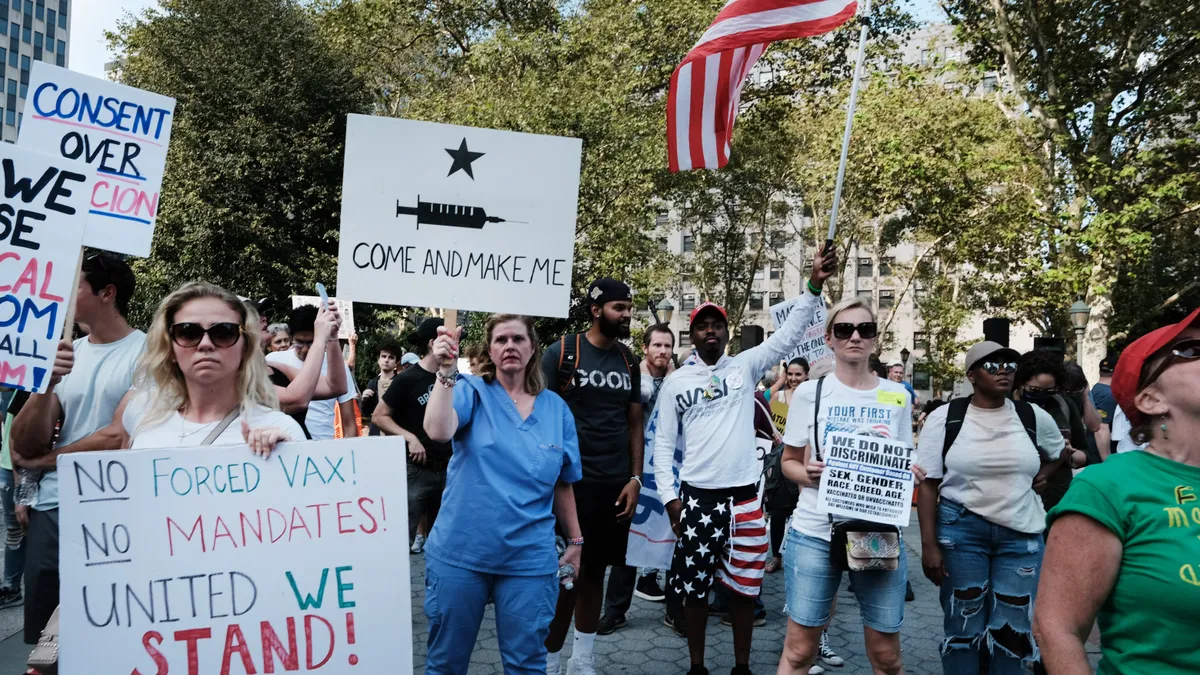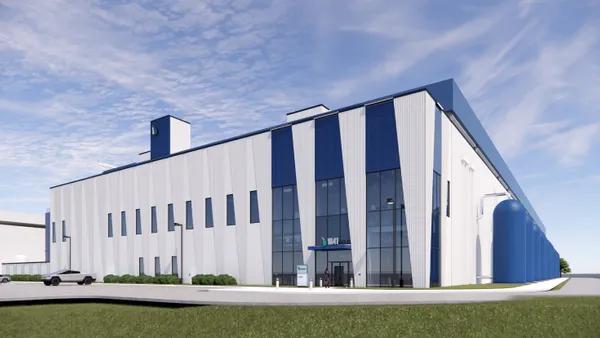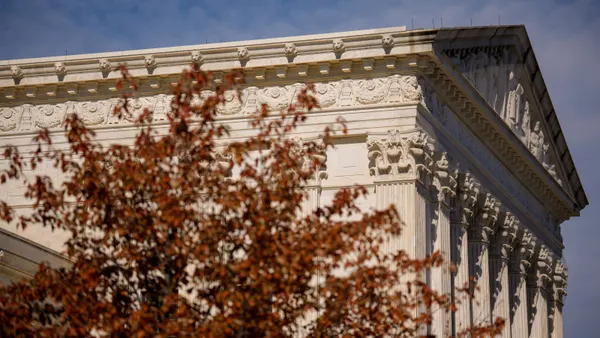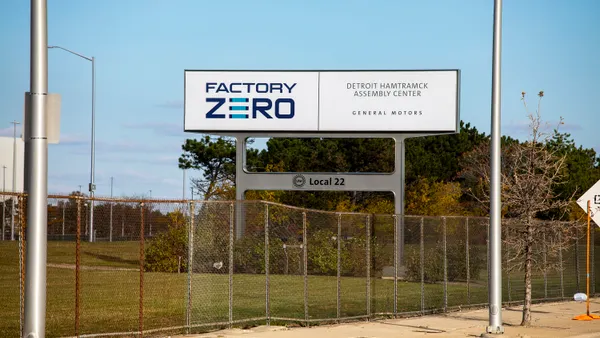Are U.S. construction workers at a high risk for contracting COVID-19 on the job? It depends on who you ask, where you look and the type of data that is (or is not) available.
There have been persistent contradictions between construction's available COVID-19 data and the experiences reported by contractors on jobsites.
For instance, a recent report from the Colorado Department of Public Health and Environment found that more construction workers died of COVID-19 during the first year of the pandemic than those in any other industry in the state. The industry represented 12% of all working-age deaths, even though construction accounts for only 6.6% of all employment in Colorado.
Other data show that construction workers in Texas were five times more likely to be hospitalized with COVID-19 than workers in other industries; that construction had the second highest number of COVID-19 cases among all industries studied in Utah; and that construction accounted for the sixth highest total of COVID-19 outbreaks in Washington state.
A different view from the jobsite
Those results, however, appear to contradict contractor and industry reports of a lack of jobsite spread among construction workers. At an AGC webinar last week, Chris Carson, president of Springfield, Missouri-based Carson-Mitchell, said that on his jobsites, the only time he’s experienced a delay wasn't due to an outbreak, but instead when a single superintendent contracted the virus. Because the superintendent was out sick, construction couldn't proceed according to plan and it cost the company weeks of time.
"As far as a job shutdown itself, no, not since the beginning of this have we had anything like that," Carson said.
Brett Strassel, an executive for Hedrick Brothers Construction, a general contracting firm based in West Palm Beach, Florida, said that he hadn’t heard of any jobsites being shut down due to infected workers.
"The only time I’ve heard of it is when the owner has made that determination, and that was a little bit earlier on in the process in the early spring of 2020, but I am not aware of any projects in our area through our friends or competitors in the industry where they’ve had to shut down due to COVID-medical related issues," Strassel said.
Lack of nationwide data
To be sure, a lack of a timely, uniform data tracking system for workplace outbreaks at the national level makes it difficult, if not impossible, to track actual COVID-19 cases on construction sites.
While contractors are required to file OSHA 300 log reports for COVID-19 cases at work, the agency doesn't release cumulative data on those reports until November of the following year, which means 2020 data still won't be available for another two months. (OSHA has set up a website to track workplace fatalities due to COVID-19 that were inspected by the agency, but it doesn't break down those results by industry.)
Another challenge is that other data, where available, can tell a contradictory story, even among similar data sets.
For example, according to a report from the National Governors Association, 18 states report specific COVID-19 outbreak data on their websites that go beyond long-term care settings. Of those, eight break down settings to an industry level where construction is included.
But even among those states, the results are inconclusive.
In Michigan, for instance, which tracks both construction and manufacturing COVID-19 clusters together, the category accounted for the most ongoing outbreak clusters outside long-term care facilities, or 39 out of 250 total.
In Illinois, however, which tracks construction and manufacturing separately, the numbers veered dramatically: Since July 1, the state has tracked just 10 outbreaks in construction, compared to 205 for factories and manufacturing, the highest of all industries in the state.
On a cumulative basis in Louisiana, construction has accounted for 12 outbreaks out of 1,347 statewide, less than 1%, far fewer than the 184 clusters reported for industrial settings.
In North Carolina, there were 20 construction and contractor clusters out of 1,969, or just 1%. That was higher than the 10 clusters in agriculture and the 11 in food processing, but far lower than the 47 in meat and poultry processing, and the 124 in manufacturing, which accounted for 6.2% of outbreaks.
In Massachusetts, industrial settings including construction, non-food manufacturers, warehouses and distribution centers accounted for just 9 infection clusters out of more than 7,100, a miniscule amount.
In Vermont, construction and carpentry had six to nine outbreaks through the first year of the pandemic, far less than manufacturing, which had 22.
In Washington State, similar to Colorado, construction represented 8% of all COVID-19 workplace cases, but just around 6% of the working population, indicating it had elevated COVID-19 rates.
Data experts point out, however, that kind of overrepresentation could be due to the fact that construction workers were leaving their homes on a daily basis, and thus automatically risking more exposure than people working remotely during the pandemic.
While pulling a consistent pattern from those numbers is challenging, one aspect stands out. In states where construction and manufacturing are tracked together, such as Michigan, construction’s case numbers are higher. In places where they're broken out, such as Illinois, North Carolina and Vermont, construction's share appears smaller.
A model, or a cautionary tale?
The mixed results pose a broader question for construction, and even business in general, as companies struggle to bring back workers in the face of variant surges this fall: Has construction been a model for how to return to work safely, or a cautionary tale of transmission in the workplace during COVID-19?
For some, construction's natural inclination to use personal protective equipment such as face masks and shields for regular business purposes, as well as always having safety protocols in place, has contributed to a valid claim for the industry's clean bill of health.
"They are a model, because they do an excellent job of tracking and monitoring their sites and their people, and making sure they’re complying with guidance," said Brian A. Wolf, an attorney and partner in the Fort Lauderdale office of Smith, Currie & Hancock, which specializes in construction law. "I really believe that they do that better than any other industry." He adds that, "unless you have all the data points, it's hard to be critical of construction itself."
For Laura Guzman, vice president of marketing and communications at Milpitas, California based XL Construction, the numbers quoted here tell a different story than what she’s seen onsite.
"Some of the data results seem contradictory to what we've experienced, because we've had a very low incident rate, and fortunately for us, that has kept our jobs going," Guzman said. "I feel like we figured some things out."
One of those things was having a phased plan as conditions changed. For example, when cases decreased this summer, the company started opening up again, with mask requirements relaxed for vaccinated workers, and a target date of Labor Day to return to the office.
But when the delta variant caused a surge in cases, the company pulled back again. "The minute it started to look like things were going off the rails, we took a deep breath and said, 'Let's not keep pushing forward. Let's take the right precautions.' Because this thing changes week to week. By now we all know how this thing goes."
Some advantages
For Ezra Laniado, owner of Los Angeles-based commercial contractor Landmark Construction Crew, just the ability to work outside, and not be in an enclosed spaces, has given construction a leg up compared to other industries.
"I think we have an advantage, because when you're framing out a new building, it's all outdoors," Laniado said. "I'm not a doctor, but working indoors is really the situation where you're more at risk."
For other contractors, though, construction has been both a model, and a cautionary tale during COVID-19.
"This is my first pandemic," said Kyle Peacock, CEO of San Francisco-based Peacock Construction. "I would love to say construction is always flying the flag of being incredibly safe, but I think there have been some challenges, and people did struggle with it."
At the same time, by using worksite check-in technology on his jobs that ask workers about symptoms, vaccination status and COVID-19 exposure, Peacock said he's experienced zero workplace transmissions since the beginning of the pandemic.
"What's interesting about the cases that did appear on our sites — not through transmission, but through coming to work — was when you asked, 'How did you get this?' they'd tell you they went to a party with 200 people this weekend," Peacock said.
Until more complete data emerge, however, the true answer is likely to remain anyone’s guess.
Matthew Thibault contributed to this report.



